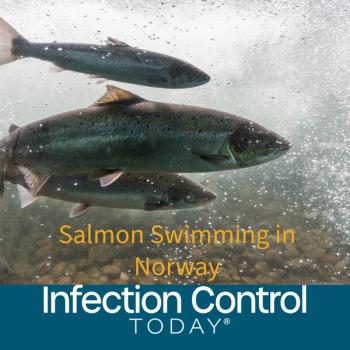
Understanding and Mitigating H5N1, Avian Flu Risks in Cattle and Beyond: Insights from Ramon Zegpi Lagos, DVM, PhD
Ramon Zegpi Lagos, DVM, PhD, discusses H5N1 (avian flu), risks, transmission dynamics, preventive measures, and ongoing research at The Ohio State University.
Highly pathogenic avian Influenza (HPAI) A(H5N1) viruses outbreaks have been widespread in wild birds and sporadic in poultry flocks and mammals, including bobcats, striped skunks, raccoons, mountain lions, squirrels, polar and black bears, red foxes, and harbor seals.1 To complicate the situation, the virus has been found in 2 humans in the US, 1 in Texas and 1 in Colorado.2
The CDC says these infections do not “change the H5N1 bird flu human health risk assessment for the US general public, which CDC considers to be low. However, people with close or prolonged, unprotected exposures to infected birds or other animals (including livestock) or environments contaminated by infected birds or other animals are at greater risk of infection. CDC
It has been reported that the latest case of infection was exposed to dairy cattle in Texas, which are believed to be infected with HPAI A(H5N1) viruses. The infected person experienced only one symptom ie, conjunctivitis, which caused redness in their eyes. However, the patient is recovering well and is currently being treated with an antiviral drug for influenza. They were instructed to isolate themselves to avoid spreading the disease.2
Other states also have had outbreaks: Idaho, South Dakota, Kansas, New Mexico, North Carolina, Michigan, and Ohio.3
To get more clarity on how concerned health care workers and those who work with cattle3 should be, Infection Control Today® (ICT®) asked Ramon Zegpi Lagos, DVM, PhD, assistant professor and poultry disease specialist at The Ohio State University, Wooster, Ohio. Zegpi Lagos is an expert in poultry diseases, pathogen-host interactions, immune responses in chickens, and vaccine development.
“As you know, one person was confirmed to be affected by HPAI H5N1,”3 Zegpi Lagos said. “This person was exposed to dairy cattle that were confirmed to be infected with H5N1 HPAI. HPAI has crossed the species barrier plenty of times already, infecting multiple wild bird and mammal species. Furthermore, there is no evidence of person-to-person transmission of the avian influenza case in Texas. Lastly, the genomic sequence of the H5N1 found in cattle shows minor changes compared to the original avian H5N1, with little to no adaptation to mammal hosts. All this evidence supports the decision of the CDC to not change the H5N1 bird flu human health risk assessment for the US, which CDC considers low at the moment.”
Zegpi Lagos explains how the virus may present in cattle. “The method of transmission between cattle is not clear. HPAI has an initial respiratory tract tropism, and then, after a viremia, the virus can reach other organs in birds. In cattle, however, the respiratory tract does not play a primary role in virus spread. Scientists believe the transmission route is related to the mammary gland and contaminated milk production equipment.”
Then Zegpi Lago clarified, “As a side note, pasteurized milk should not pose any risk for HPAI transmission since the virus does not resist high temperatures.”
Continuing research
Research continues despite possible challenges, Zegpi Lagos assured ICT. “At OSU, we have facilities that could host animals and the virus for research, but many requirements need to be met before starting research in BSL3 (Biosafety Level 3*) facilities that contain infectious agents or toxins that can be transmitted through the air and cause potentially lethal infections) conditions. We don’t know yet if the HPAI H5N1 will be considered a select agent; if so, it will make working with it harder for research. Evaluating the cross-species transmission from cows to other animals, understanding the transmission dynamics in cows, and understanding the tropism of the virus in cattle are some questions that need answers.”
* (Facilities designated Biosafety Level 3 are those that contain infectious agents or toxins that can be transmitted through the air and cause possibly fatal infections)
Reducing infection Risk
The CDC suggests minimizing the infection risk when around birds, cattle, or other possibly infected animals; individuals should adhere to several preventive measures.3 Firstly, avoiding direct contact with sick or deceased animals, including wild birds, poultry, and other domesticated animals, including cows, is crucial. If you do touch a sick animal, wash your hands well with soap and warm water. Additionally, steering clear of unprotected exposure to animal feces, bedding, or raw milk, especially from birds or animals suspected of harboring the H5N1 bird flu virus, is essential.
Consuming uncooked or undercooked food products, such as raw milk or cheeses, should also be avoided from animals with suspected or confirmed H5N1 bird flu virus infection. Fortunately, commercially available milk is safe for consumption as it undergoes pasteurization, effectively eliminating bacteria and viruses like influenza.
Similarly, properly handled and cooked poultry in the US proposes no risk, provided it reaches an internal temperature of 165˚F, effectively killing bacteria and viruses, including bird flu viruses.
References
- Avian influenza current situation summary. CDC. Accessed April 12, 2024.
https://www.cdc.gov/flu/avianflu/avian-flu-summary.htm - CDC Newsroom. Highly pathogenic avian influenza A (H5N1) virus infection reported in a person in the US. April 1, 2024. Accessed April 12, 2024.
https://www.cdc.gov/media/releases/2024/p0401-avian-flu.html - Highly pathogenic avian influenza (Hpai) detections in livestock. Animal and Plant Health Inspection Service. Updated April 12, 2024. Accessed April 12, 2024.
https://www.aphis.usda.gov/livestock-poultry-disease/avian/avian-influenza/hpai-detections/livestock
Newsletter
Stay prepared and protected with Infection Control Today's newsletter, delivering essential updates, best practices, and expert insights for infection preventionists.






